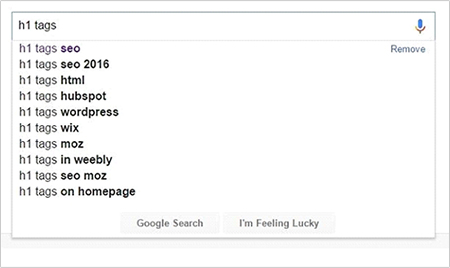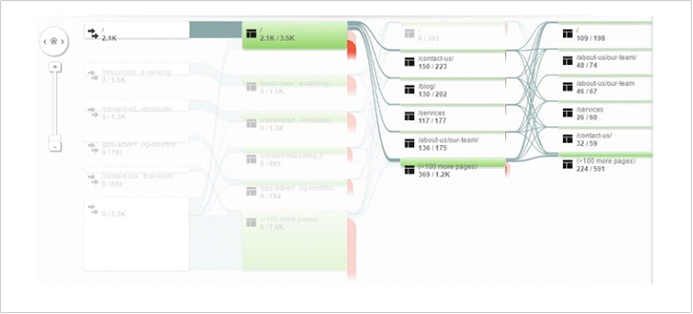Improve the quality of your content

We are confident you have heard the phrase “create better content” of late. In fact, it is mentioned so much it is a bit of a cliché among the digital marketing community and is regularly considered to be the definitive solution for improving the quality website. “Create better content,” sounds simple, doesn’t it?
While we don’t dispute high quality content that educates your readers is necessary, saying you need to create “better” content most likely leaves you asking more questions than getting answers. It is highly likely, what “better” actually means has not been clearly defined in relation to the content you create nor is it likely you have been told any practical steps you can take to improve it. That is where we are going to help.
Imagine content creation as a scientific experiment, and you’re the scientific genius who is making sense of it.

In a basic cause-and-effect experiment, you will have a variable that can be influenced by the addition or application of other variables and observing their effect. If the content you create is the main variable in your experiment, then you want to identify what other variables you need to know about and then adjust them to make the content “better”. These variables may include:
- The topic of the content
- The title of the content
- The length and depth of the content
- The content format
- Whether there are backlinks to the content
- How fresh the content is
When we think of “better” content we usually think of content of higher quality than that of a competitor or the content you have already or that it is performing better in some way. In this post we will look at some practical ways to make content “better” through researching competitors, analysis of your site and researching links. It begins with asking the correct questions.
How do you create content that is better than your competitors?
Offering good answers to the questions of prospects can prove to be rewarding for your business. You should aim to have your potential customers land on your page first, however to do that you will have to know about what alternative resources and content is available to consumers. You do not need elaborate tools this kind of competitive research at a basic level.
Firstly, choose an industry relevant topic and begin some general search queries on this topic.
For example, we might want to know what content is out there regarding “H1 Tags” as it is something related to our industry. If we were looking at ways to improve existing content, we may ask the question “what do others do who already rank well for H1 Tag search queries? What do they do that we don’t?” We would also want to know what people actually search for regarding H1 tags, as shown in the google screenshot below illustrating results based on the real searches many people make.

Secondly, draw up a spreadsheet that tracks information about what industry competitors or other publications are doing.
Bear in mind, with content, you are not just in competition with direct business rivals. You are competing with all other websites ranking for the keywords you want to rank for.
Keeping a record of what content is readily available will allow you to gain greater insight of the competitive landscape where you will be placing your content, or where it already exists. Anything you create should be able to hold its own against other content that performs well. If you do not believe you can do that, maybe the barriers to entry are too high for that keyword and you may be better to move on to a different topic.
Information on competitors you should record
- The topic of the content
- The title of the content
- The URL of the content
- The length of the content
- The format of the content, is it; a best of list, a blog post, an infographic, a case study, a free guide, and so on.
By completing this kind of analysis, you should have the ability to draw conclusions and take practical steps towards creating “better content” about the specific topic.
Also, you can utilize tools that add to the findings of your research, or ascertain which keywords are best for doing analysis of competitors based on search volumes. There are numerous research tools available, however we recommend:
Keywordtool.io
SEM Rush
How do you improve content conversion rates?
This is a great question to ask yourself while you create or improve your content. While the creation of new content has importance, reviewing the content you already have to see if it is working can bring success to you also. Conversions can lead to direct sales from your content, the completion of goals such as signups for newsletters, or free guide downloads. Another way you can gain insight of how to improve pages is to look at the behavior flow of visitors to your site.
To do this you need Google Analytics or alternatively a marketing automation tool, and time to conduct the research you need.
Behavior flow report from Google Analytics
This Google Analytics report can be off-putting for many people, actually it is more simple than it appears, so keep calm. It keeps track of the path visitors take on your website from when they enter to when they leave. You are able to get multiple insights about how and where people engage with your site content. It can also help you to figure out where pages can be improved.

The report allows you to highlight where your visitors entered, and the path they took after that. Watch for trends like…
- Common paths visitors take through your website.</strong> You need to understand if this is the path you want them to take. If it isn’t, there may be something between one page and the next which could assist them along the path to a conversion or goal.
- Identify your common exit pages or pages with problems.</strong> If you identify a page with what seems to an abnormally high drop-off rate, you may need to investigate the problem. It might be that ther are technical issues, or the page’s content needs to be improved.
If you are unable to find out why users exit the page at this abnormal rate it may be worthwhile taking a closer look at the page and asking:
- Is the title or headline misleading?
- Is it user-friendly (for example does it load correctly, does it have any broken links or images?)
- Is the content too light, is it providing any real value to users?
- Is it providing a good call-to-action prompting users to continue on to more related content?
- If it is gated content is there information about what a user will find on the gate’s other side?
By conducting this type of analysis you can find out what the problem is with the page, and make some improvements to test if the situation can be improved. You may be able to make improvements to the page by adding a call-to-action, fixing a misleading title, tidying up the page content or changing the layout. You can analyze if these changes make a difference later using Google Analytics or a marketing automation tool.
How do you make your content more link-worthy?
It is well-known a website needs links to it to perform well in search engines and the creation of link-worthy content is primary way to get them. When creating content, do so with links in mind. It is easy to find out what content types perform well for links using tools like
Majestic
or
Ahrefs
Research is the key to creating “better content”
“Better” is a loaded word and there are many different variables that go towards making content “better”. Do not get discouraged with content creation just be consistent and persistent. Draw conclusions from what you find out from competitor research, analysis of your site and links. There is no concrete answer to the question “what will make it better?”, however you can gain insights to help you improve your content over time.
